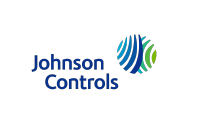
When working with senior leaders, one of the most often asked questions is “ how do I and my team collaborate more effectively across boundaries”. There it is…..that timeless, age-old question. Organizations have talked about cross-collaboration and reducing silos for decades! Why does it seem so hard? Why have we not been able to design and implement better processes to build business knowledge; enhance relationships and create more innovative and efficient processes? Why does it seem to become worse when times are challenging? Often, boundaries create borders that divide groups into Us and Them resulting in fractured relationships, diminished resources, divisive conflict and suboptimal results. How then can we change these boundaries to places of emerging opportunity and new possibility creating the potential for different ways of working and new forms of collaboration?
As our world becomes more complex, leaders must transform from managers who understand and protect their boundaries to managers who practice boundary spanning. Though it can be a challenger to collaborate and navigate across boundaries, the solutions to today’s most pressing business challenges often rest at the intersection of multiple boundaries. That’s why boundary-spanning leadership involves creating direction, alignment and commitment across boundaries.
5 Types of Boundaries Leaders Need to Span:
- Vertical: between hierarchical levels of the organization
- Horizontal: between functions of the organization (expertise, departments)
- Stakeholders: with external groups such as clients, partners, value chain partners & communities
- Demographic: with diverse groups (generational; culture; gender etc.)
- Geographic: across localities (regions, countries, markets)
Did you know that research by CCL (Centre for Creative Leadership) shows that challenges arising from horizontal boundaries with senior executives were cited nearly 71% over those of the other 4 dimensions? The unintended consequence of matrixed and regional structures is that walls have been erected between groups that need to be collaborating. Consequently, “silo-busting” has become a key challenge amongst leaders.
How do I start? Boundary-spanning leadership according to CCL begins with:
1. Manage boundaries
Create or strengthen them. Clarify roles, purpose, areas of specialization to build safety and respect.
2. Forge common ground amongst groups
Represents what is universal and shared. Bring groups together to achieve a larger purpose. It is about creating a shared vision to build trust, engagement and shared ownership across boundaries.
3. Discover new frontiers.
Discover the intersections where groups collide, intersect and link. Create a “team of teams” where differentiated expertise, experience and resources are yet driven by an integrated vision and strategies in order to support breakthrough innovation, transformation and reinvention.
Then use one of the 6 boundary spanning practices:
Buffering Reflecting Connecting
Mobilizing Weaving Transforming
There are over 50 different interventions and activities that we can work with you on to choose and improve your boundary-spanning leadership. Contact us for more practical ways of using these practices in your work. Based on CCL’s “Boundary Spanning Leadership: Six Practices for Solving Problems, Driving Innovation & Transforming Organizations”.
Benefits of Boundary Spanning Leadership:
- Increased organizational agility to respond to a dynamic environment
- Advanced cross-organization innovation processes
- An engaged and empower workplace
- Flexible, cross-functional learning capabilities to solve problems
- Higher performing teams
- Better managed risks and rewards through cross-sector partnerships

















